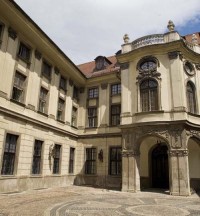Horns made from the actual horn of animals are among our oldest musical instruments. As a folk signalling instrument, the cowhorn was only used by the swineherds, who blew it when driving the herd out to pasture for the pigsty doors to be opened so that they would not have to wait for the piglets with the whole herd. The upper opening of the horn was carved in the shape of a mouthpiece, or a separate mouthpiece was made of some other material, which was called “munstekli” after the German “Mundstück” under the influence of martial music. The sawed off mouthpiece of a trumpet or a flugelhorn had a prestige value.
en

